Signs of water running down from behind the speaker: (YouTube video)
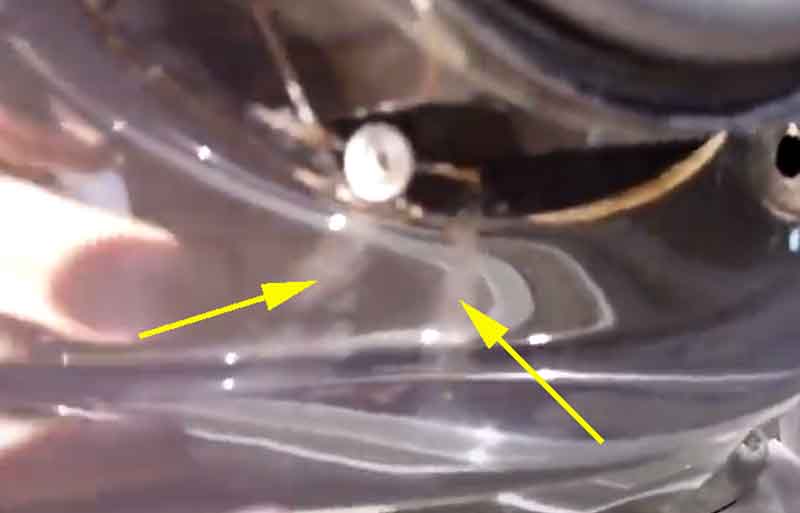
Three of the pop-rivets arrowed, with a crack by the upper right: (YouTube video)
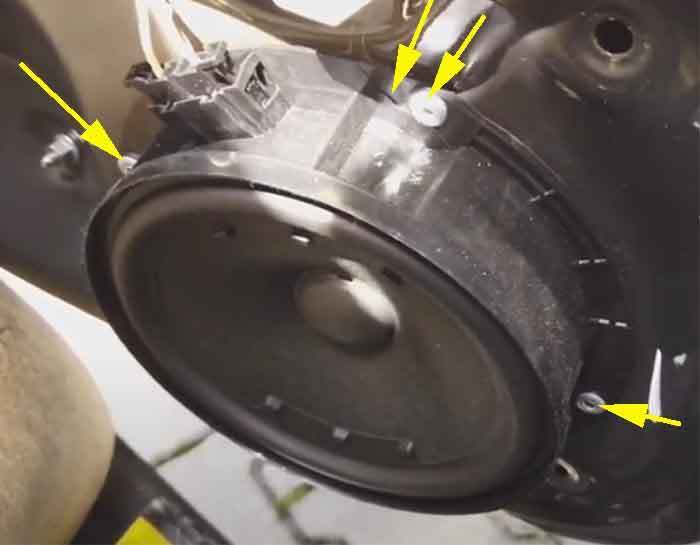
Driver's side rear speaker similar to the passengers done first. The loose strip of sponge seal at the bottom was hanging down when I removed the door trim:

I had wondered whether it was worth attempting a repair, but one of the cracks extends up the side of the speaker towards the front, so probably go straight for replacement:
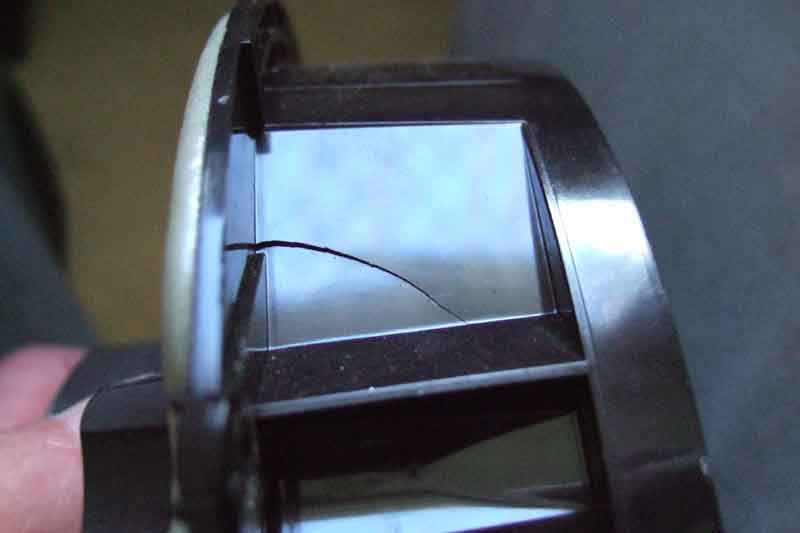
Typical cracks on my speaker, the one upper right allows water past the seal:
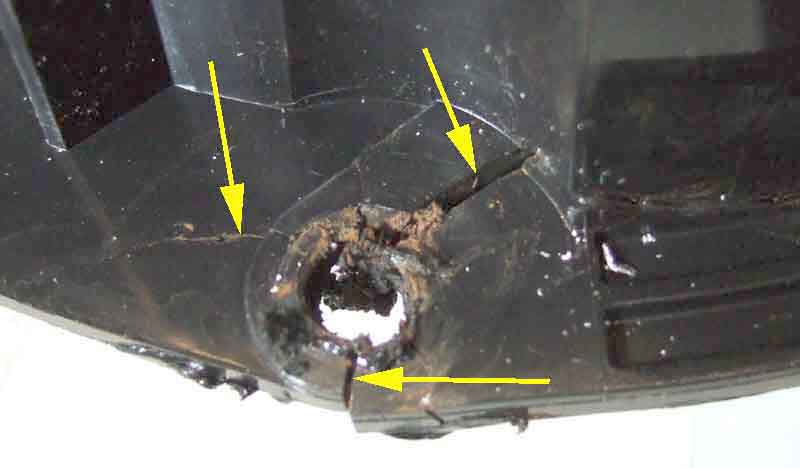
After being refitted a couple of times - without overtightening of the screws (you can't control the force of a pop-rivet nor the shock as the pin breaks) this one had broken away altogether:
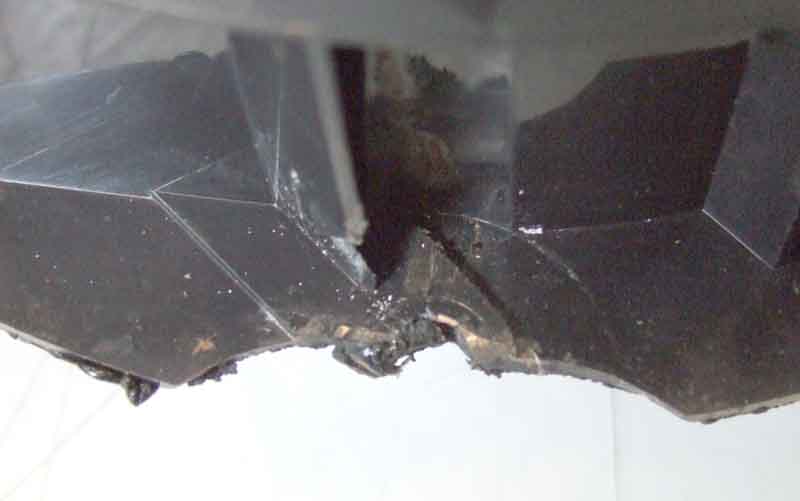
New speaker with the continuous sponge seal round the flange:
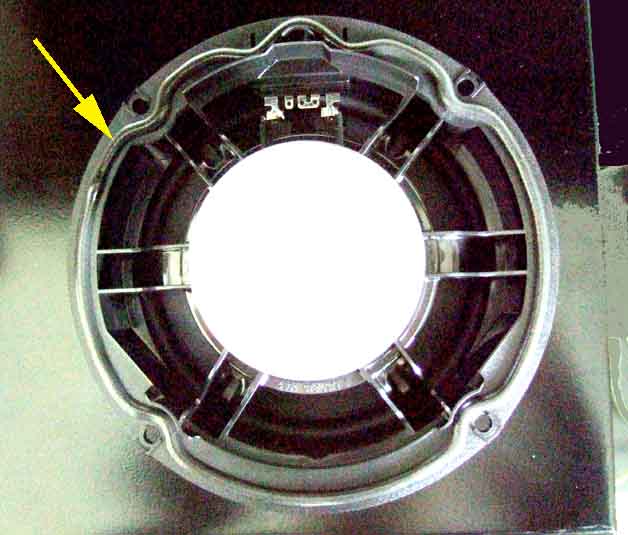
I had intended to put plates on top of each screw hole to spread the load and hopefully avoid cracking. But what I hadn't noticed after applying my sealant is that there is a thicker portion round each screw hole underneath, which would mean that anything spreading the load wider than that would be more likely to cause cracks, so that idea was abandoned. With the sponge seal on just one side of the hole the pop-rivets are probably bending the flanges a bit, which doesn't help:
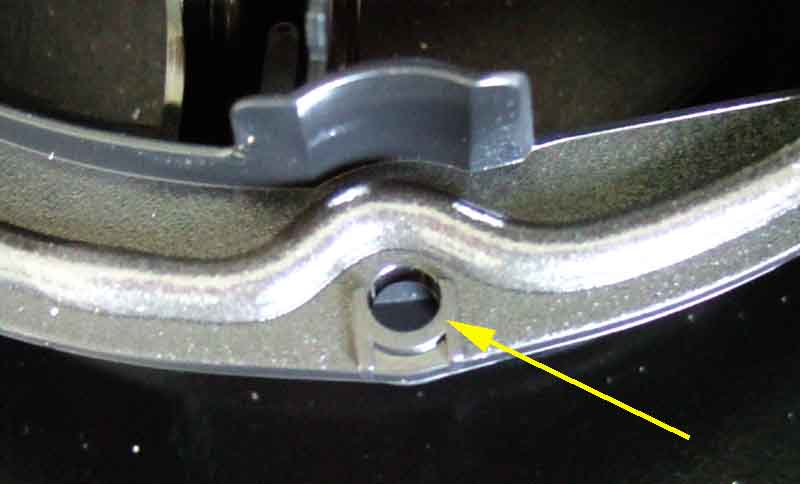
New speaker fitted, duct tape over the holes for the clips ready for a test with water. If only they had put a smaller version of that large triangular closing panel - which obviously keeps all water out - in the speaker hole, with a recess for the back of the speaker, water would have been kept away from the speaker so cracks in the mounting flanges wouldn't have been a problem:
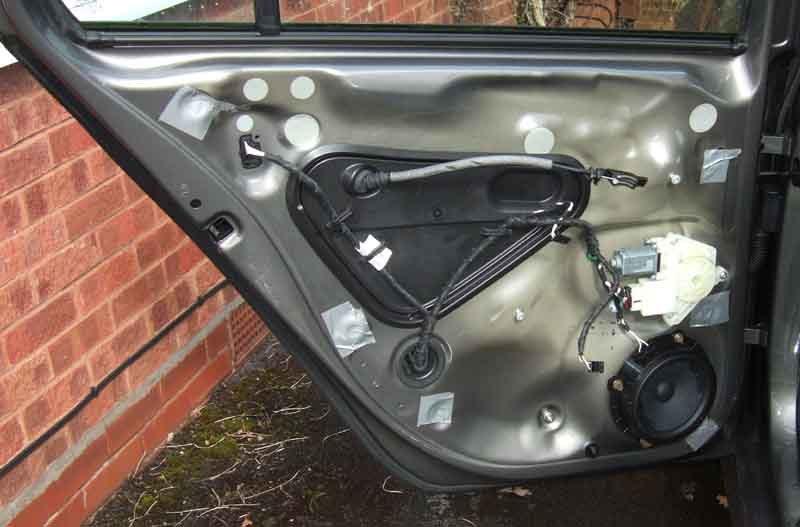
Just a smear of sealant on both sides of the panel round the screw holes to hopefully avoid water seeping past the threads as well as rusting:
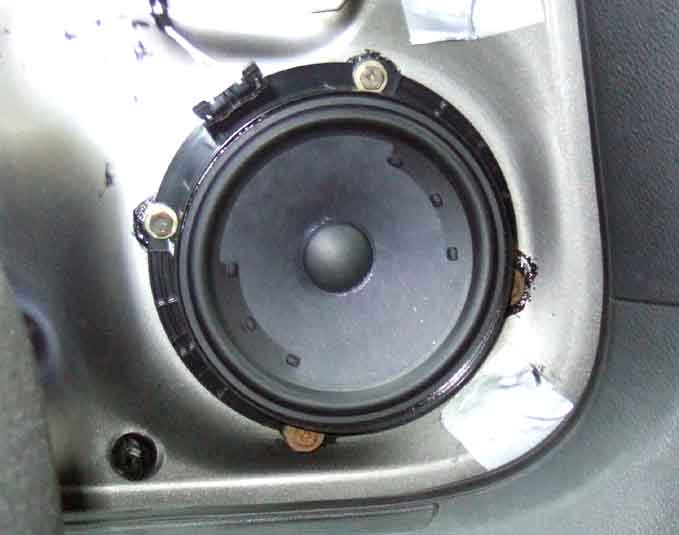
Put it all back together after pouring much water over the glass and nothing coming through. That night heavy rain, checked next morning and dry. Checked the other three doors to find this at the driver's side passenger door, so that trim has to come off as well:
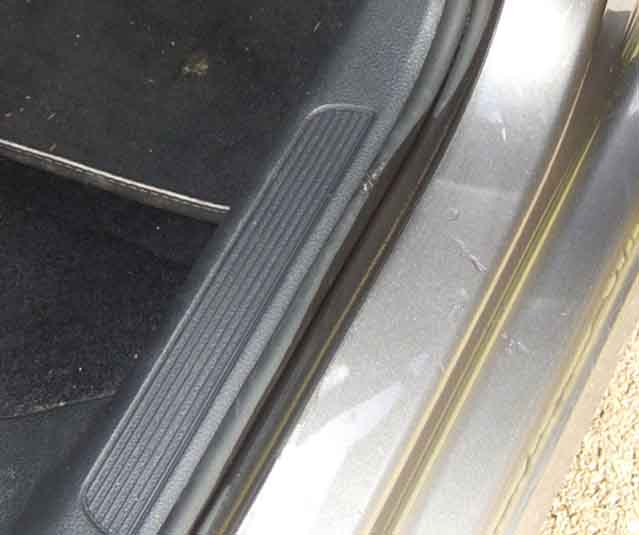
In the meantime I had mentioned the condensation problem as an aside in an MGOC forum post and Richard Mills responded saying he had had the same problem this winter in his Golf. Got back to him recommending he had a look for water on top of his door seals after rain or watering ... and both rear doors do have it! Car still under extended warranty so he is taking it back to the dealer with my information to see what they will do about it. Even if they use new speakers if they fit them in the same way i.e. using fat pop-rivets then I can practically guarantee it will happen again. In the event the slightest investigation would cost £50, with no certainty he would get that refunded, so he didn't bother taking that any further.
Knowing what I know now I made a tool to open the clips that worked well and the trim panel came off quite easily. I had thoughts of trying to seal round the speaker leaving it in-situ, but part of the sponge seal was hanging down so that is a non-starter. The flanges are in better condition but still cracked, so this time in the hope of avoiding another £40 I'm going to try putting a poly membrane between the speaker and the door, sealing the membrane to the door, so hopefully keeping water away from the speaker seal and flanges altogether. Another thought regards re-attaching the speaker. As the holes in door and speaker flange are the same size self-tappers need to be screwed through the plastic flange, or they need to be drilled out a bit, which will weaken them still further. 5.5mm pop-rivets would be needed but I'm pretty sure the stress of fitting those would shatter the flanges, and may well be causing the cracking in the first place. In the past I've used pop-rivets in over-size and/or irregular holes by putting backing washers behind the panel ... but the problem is that with the speaker offered-up you can't get to the back of them. Except ... there is a large plastic sealing panel in the inner skin through which the drop-glass regulator is installed. That pops out easily, and reaching through that I can get my hand to the back of the speaker aperture to fit washers onto the inserted rivets. Using much thinner pop-rivets there should be much less stress on the speaker flanges, the rivets should be strong enough, so certainly worth a try.
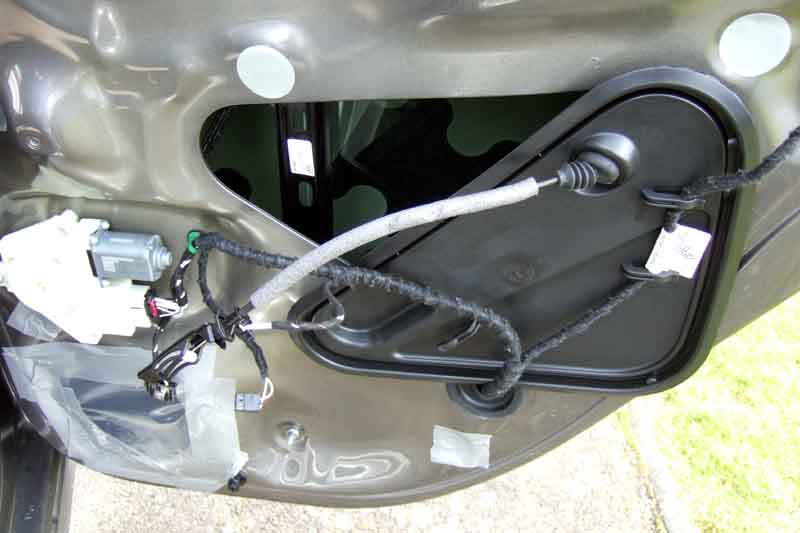
Poly membrane stuck round the door hole with duct tape leaving a recess for the back of the speaker, which is pop-riveted back in place with thin rivets and washers in front of the speaker and behind the door skin. Not the most elegant repair but it will be behind the trim panel. Tested with a full watering can and OK, I'll leave the trim off for a while until we get some decent rain:
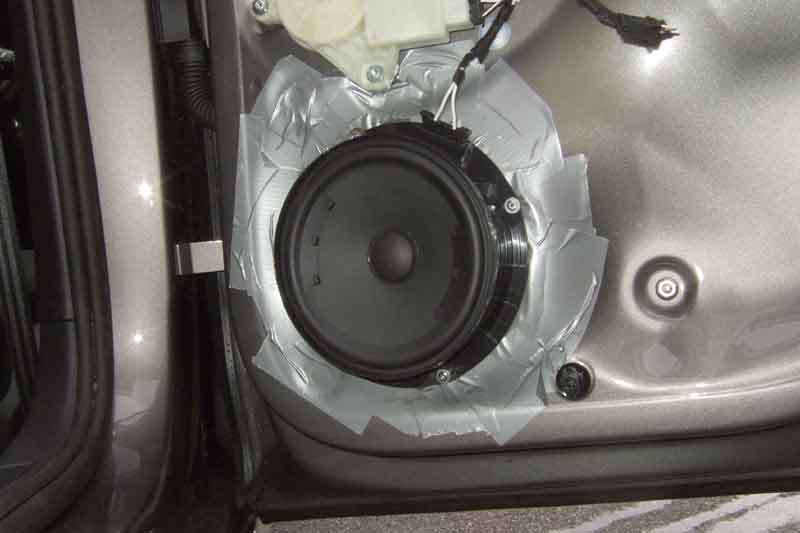
Some rain, and another test and all well, so I refit the door trim. I had to cut back the duct-tape a bit from the above.
But condensation started appearing again next autumn, and there are traces of moisture in a fold of the door seal, so still leaking but less than before.
Subsequently Richard Mills was discussing refitting with me and asked what size the holes in the door were. Based on the remains of the pop-rivets that still happened to be lying around, and a couple of measurable holes in the flange of the replaced speaker, I reckoned 5mm. But did some more Googling, found some more videos showing speaker removal and refitting. Annoyingly none mentioned the size of the holes and amusingly there was comment after comment below asking what size they were! Then I found an excellent video from Humble Mechanic confirming they were 5mm, but also discussing various methods of refitting. One option was screws fitted from behind the panel stuck in place with super-glue or sealant while you carefully place the speaker over the threads - which with my unsteady hands would be a bit of a faff. He opted for Riv-nuts (which Richard was pondering) and usefully said a 3mm fits the hole but he preferred to use a 5mm, which means drilling out the holes. The 5mm uses a 5mm screw of course, which would be a snugger fit to the holes in the speaker - the 3mm allowing some movement of the speaker until they are tightened, but I can't see a problem with that. He was also talking about sealing round the edge of the door hole as the Riv-nuts will hold the speaker away from the door skin by the thickness of the Riv-nut flanges, and showed a foam cup with a large flange. The flange would go against the door skin and the back of the speaker would be in the cup. That would stop water getting onto the back of the speaker altogether, so any cracking of the flanges wouldn't be an issue. He said he couldn't use it as it fouled the lowered drop-glass, but Googling 'foam speaker baffle' I found these from Crutchfield at various depths and are waterproof. American, with postage to the UK extortionate at double the price of the item, but further Googling showed a supplier in Germany which is a possibility - subject to Brexit import rules! As mine were already back in I passed the info back to Richard and didn't pursue it any further.
